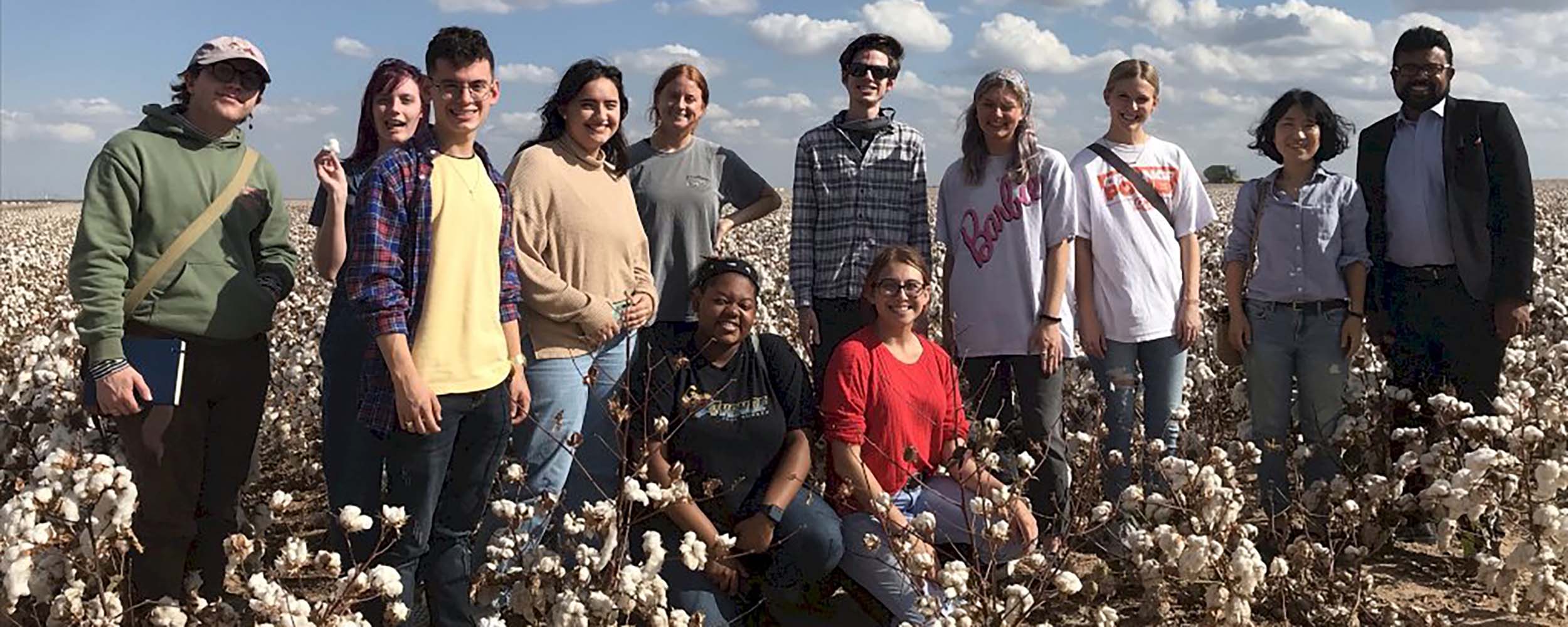
Design, Housing and Merchandising students study cotton in Altus, Oklahoma
Monday, November 22, 2021
Media Contact: Katie Lacey | Communications Specialist | 405-744-9347 | katie.l.lacey@okstate.edu
Design, Housing and Merchandising students enjoyed an invaluable opportunity on a recent study tour to Altus, Oklahoma, to explore how cotton is produced and how the commodity can respond to a growing call for sustainability in the post-pandemic era.
Led by associate professor June Park and assistant professor Sumit Mandal, this trip
was made possible by a 2021 Cotton in the Curriculum Grant that a group of Design,
Housing and Merchandising (DHM) faculty members received from Cotton Incorporated.
Ten students visited cotton fields and gins as well as the Plains Cotton Cooperative Association (PCCA) to learn production, ginning and to hear from industry leaders.
“To see that cotton fabric is actually derived from the seeds of cotton plants, and how much goes into producing cotton fiber from start to finish allows the students to develop a different perspective on cotton fiber and hopefully more sustainable fashion,” Park said.
In the era of fast fashion and synthetic fibers, students tend to think clothes are made of materials that can be easily manufactured. Cotton is the most essential fiber used in apparel production, and having an opportunity to interact with cotton producers and marketers helped broaden students’ knowledge of the end products and connect knowledge of fashion to the agricultural industry.
The Altus study tour was designed so that students can gain real-world experience outside the classroom and delve into the agricultural aspect of cotton fibers to further their knowledge about cotton production and marketing. Students heard from speakers from a variety of groups, including the National Cotton Council, Oklahoma Cotton Council and PCCA.
“There is a disconnect between people using cotton products and where the cotton came from. One reason is the fashion industry is one of the most fragmented industries with an extremely complex supply chain,” Park said. “To make one T-shirt, cotton fibers produced in Altus will need to travel to multiple different countries before it can be used.”
Thanks to grant support from Cotton Inc., OSU DHM students have not only had the opportunity to participate in study tours, but also to use cotton for a variety of class assignments.
Starting on Nov. 30, cotton pieces made by students are available to view at the DHM Gallery and Gallery Hall on the fourth floor of the Nancy Randolph Davis Building
